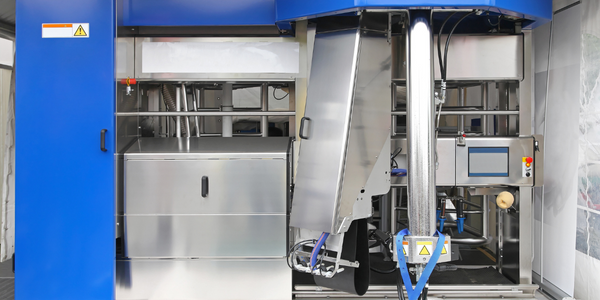Customer Company Size
Large Corporate
Region
- Europe
Country
- Switzerland
Product
- Camunda BPM
Tech Stack
- Java EE
- JBoss application server
Implementation Scale
- Enterprise-wide Deployment
Impact Metrics
- Productivity Improvements
- Digital Expertise
Technology Category
- Application Infrastructure & Middleware - Middleware, SDKs & Libraries
Applicable Functions
- Business Operation
Use Cases
- Process Control & Optimization
Services
- Software Design & Engineering Services
About The Customer
Helvetia is a successful and international insurance group that has been in operation for over 150 years. The company employs 6,700 people and serves 4.7 million customers. Helvetia is headquartered in St. Gallen, Switzerland, and has branches in Germany, Italy, Austria, Spain, France, and various other countries, ensuring its global presence. The company's business focuses on private customers, small and medium-sized enterprises, and larger companies. Helvetia's services include life and non-life insurance, tailored specialty line insurance coverage, and reinsurance.
The Challenge
Helvetia, a successful and international insurance group, was facing a challenge in the context of digitalisation. A central system for customer management had to be opened up to further channels. Extended, automated and manual review processes had to be implemented for changes made to personal data. Specific information and processes that were dependent on how certain data was changed were also required. In order to manage the processes during different types of events, a wide range of technical rules were required. Helvetia wanted to build a new central application that would store all assignment processes. These processes would review information and communicate with mailboxes according to the organizational structures in place. The department also required detailed reports on the processes and their tasks, for instance on throughput times.
The Solution
Helvetia decided to use Camunda BPM as an Embedded Engine in more than six Java EE applications productively and with an increasing tendency. The solution provided by Camunda which was developed during the proof of concept was convincing and all requirements were met in an optimal way. This was due both directly to the engine and its components as well as to the flexibility and expandability when deployed in an existing Java environment. Within half a year, two developers were able to implement the part of the project that deals with the process implementation, integration, mailbox application, and its mask. Due to their prior knowledge of Java, the developers were quickly able to get to grips with Camunda BPM and there was no need for them to be extensively trained in this area.
Operational Impact
Quantitative Benefit

Case Study missing?
Start adding your own!
Register with your work email and create a new case study profile for your business.
Related Case Studies.

Case Study
System 800xA at Indian Cement Plants
Chettinad Cement recognized that further efficiencies could be achieved in its cement manufacturing process. It looked to investing in comprehensive operational and control technologies to manage and derive productivity and energy efficiency gains from the assets on Line 2, their second plant in India.

Case Study
Airbus Soars with Wearable Technology
Building an Airbus aircraft involves complex manufacturing processes consisting of thousands of moving parts. Speed and accuracy are critical to business and competitive advantage. Improvements in both would have high impact on Airbus’ bottom line. Airbus wanted to help operators reduce the complexity of assembling cabin seats and decrease the time required to complete this task.

Case Study
Improving Production Line Efficiency with Ethernet Micro RTU Controller
Moxa was asked to provide a connectivity solution for one of the world's leading cosmetics companies. This multinational corporation, with retail presence in 130 countries, 23 global braches, and over 66,000 employees, sought to improve the efficiency of their production process by migrating from manual monitoring to an automatic productivity monitoring system. The production line was being monitored by ABB Real-TPI, a factory information system that offers data collection and analysis to improve plant efficiency. Due to software limitations, the customer needed an OPC server and a corresponding I/O solution to collect data from additional sensor devices for the Real-TPI system. The goal is to enable the factory information system to more thoroughly collect data from every corner of the production line. This will improve its ability to measure Overall Equipment Effectiveness (OEE) and translate into increased production efficiencies. System Requirements • Instant status updates while still consuming minimal bandwidth to relieve strain on limited factory networks • Interoperable with ABB Real-TPI • Small form factor appropriate for deployment where space is scarce • Remote software management and configuration to simplify operations

Case Study
Developing Smart Tools for the Airbus Factory
Manufacturing and assembly of aircraft, which involves tens of thousands of steps that must be followed by the operators, and a single mistake in the process could cost hundreds of thousands of dollars to fix, makes the room for error very small.









